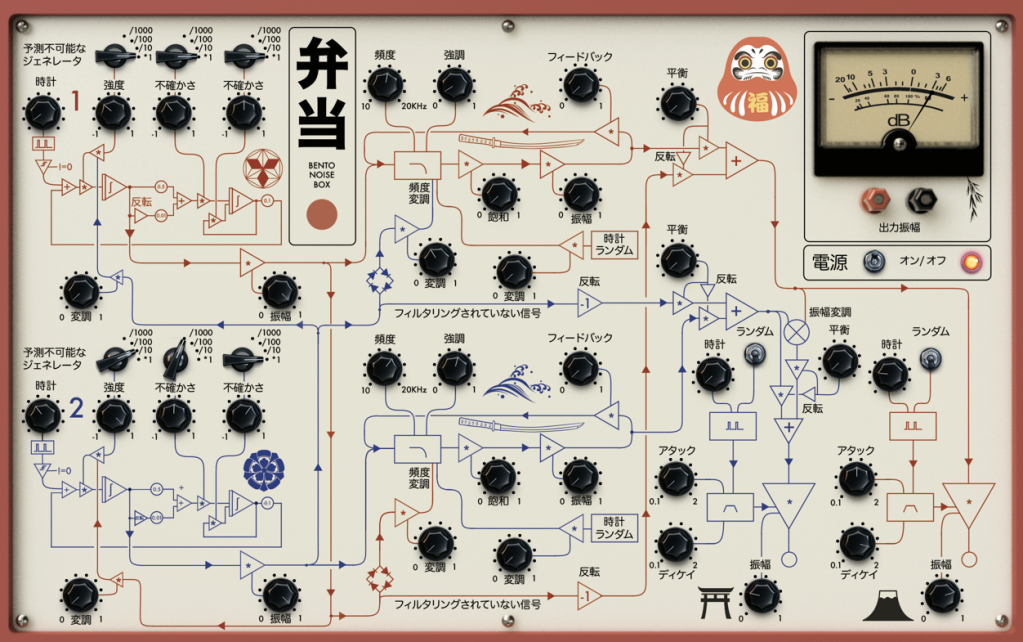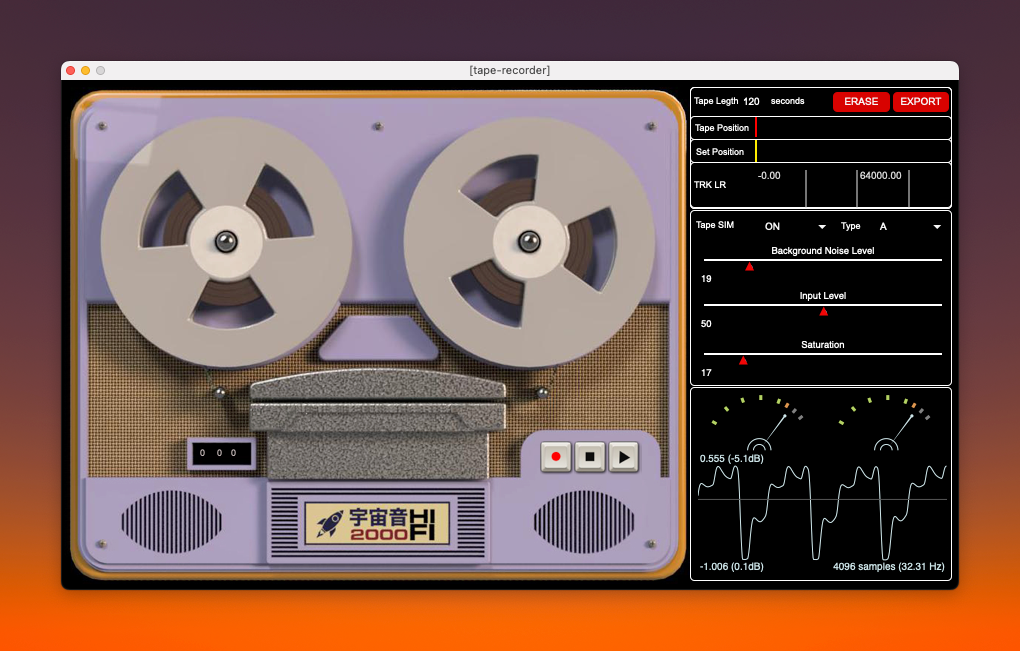Feedback networks, unstable oscillators, shaky fat quivering filters, distorted mayhem, a bunch of labels in Japanese, a bunch of switches and knobs and a tape recorder – Bentō is a delight of software madness. It’s a delicious meal of noise.
The drones start right away when you load Bentō – warm and organic – and from there, ignore the labels (uh, especially if you don’t read Japanese) and immediately you unleash a storm of trembling noise. It’s the latest software suite from eccentric code virtuoso and estoeric sonic history buff Giorgio Sancristoforo, the same mind who gave us the Berna3 electronic music studio and Gleetchlab.

Giorgio tells us this is a “cute crazy thing” and I can’t put it any better. It’s got the best-looking UI of anything he’s built yet – it just oozes charm – and both the presets and “let’s turn this and see what it does” or anything in between offer endless delight.
As usual, there is an exquisitely detailed manual when you want to dive in. There’s no input whatsoever in Bentō; it’s all right there in the box. But you can record to a tape recorder. It’s standalone software, which I think is how best to approach it, though you could cheat and route it elsewhere using some inter-app/loopback driver.
The basics of the architecture: there’s a red signal path and blue signal path, each with a single generator – filter – amplifier – clock – envelope structure. (Blue adds a ring modulation to all that.)
The key is, everything is unstable and unpredictable. The slightest change upsets them into some unexpected results. So even as it looks quite rational, expect it to respond in a more organic way rather than directly answer your intentions. It’s almost better not to have intentions. As the manual instructs:
Don’t underestimate the power of not knowing. Explore, don’t be shy, after all it’s not important to know the functions by memory, if you use your ear.
Of course, there’s also no harm in knowing what’s going on, which makes the manual a pleasant read. The basic gist here is that the oscillators are analog computing patches that solve a differential equation and dialing in adjustments to the clock signal that feeds them produces wild variations in the sound. The filters have full signal feedback – so happily scream away if you so desire.
It sounds like total mayhem, but the controls are so neatly laid out, and so pleasantly mix balancing controls with destabilizing controls, that it feels a bit like you know how to play the thing even before you do. It’s all keyboard and MIDI mappable, too, meaning you could ditch the mouse and set up a very nice hardware live performance rig with this.
The tape recorder is adorable, too, and not only allows you to preserve sounds but also add some pleasing saturation and noise.

It’s meditative even just to open the thing up and listen to the oscillators for a while.
For lovers of noise and experimental sound, this device is pure therapy. Beautiful stuff. Well worth the twenty bucks – Mac now, with Windows inbound soon.
https://www.giorgiosancristoforo.net/
Watch it in action:
Previously: